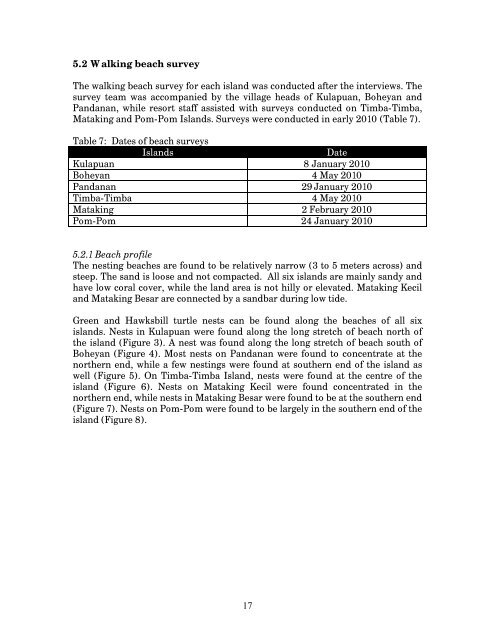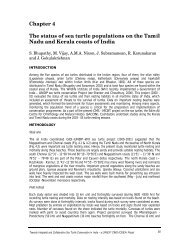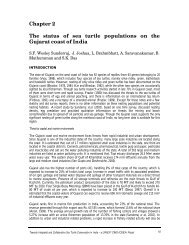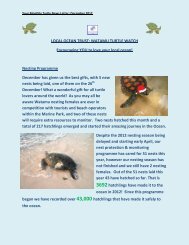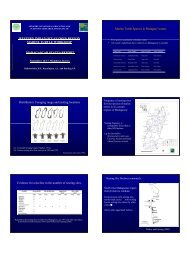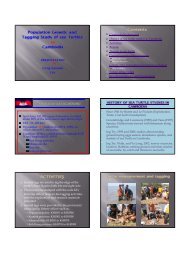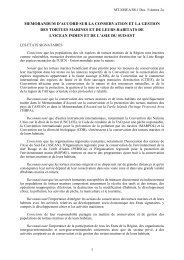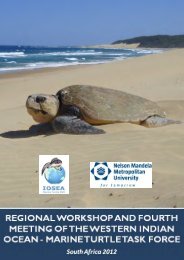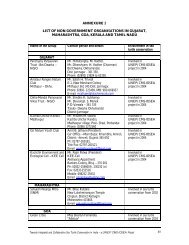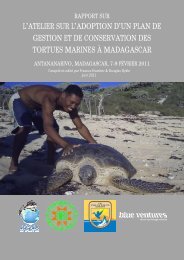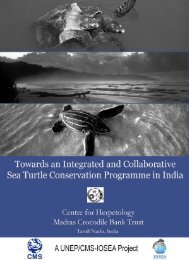Marine Turtle status Report - Indian Ocean - South-East Asian ...
Marine Turtle status Report - Indian Ocean - South-East Asian ...
Marine Turtle status Report - Indian Ocean - South-East Asian ...
Create successful ePaper yourself
Turn your PDF publications into a flip-book with our unique Google optimized e-Paper software.
5.2 Walking beach surveyThe walking beach survey for each island was conducted after the interviews. Thesurvey team was accompanied by the village heads of Kulapuan, Boheyan andPandanan, while resort staff assisted with surveys conducted on Timba-Timba,Mataking and Pom-Pom Islands. Surveys were conducted in early 2010 (Table 7).Table 7: Dates of beach surveysIslandsDateKulapuan 8 January 2010Boheyan 4 May 2010Pandanan 29 January 2010Timba-Timba 4 May 2010Mataking 2 February 2010Pom-Pom 24 January 20105.2.1 Beach profileThe nesting beaches are found to be relatively narrow (3 to 5 meters across) andsteep. The sand is loose and not compacted. All six islands are mainly sandy andhave low coral cover, while the land area is not hilly or elevated. Mataking Keciland Mataking Besar are connected by a sandbar during low tide.Green and Hawksbill turtle nests can be found along the beaches of all sixislands. Nests in Kulapuan were found along the long stretch of beach north ofthe island (Figure 3). A nest was found along the long stretch of beach south ofBoheyan (Figure 4). Most nests on Pandanan were found to concentrate at thenorthern end, while a few nestings were found at southern end of the island aswell (Figure 5). On Timba-Timba Island, nests were found at the centre of theisland (Figure 6). Nests on Mataking Kecil were found concentrated in thenorthern end, while nests in Mataking Besar were found to be at the southern end(Figure 7). Nests on Pom-Pom were found to be largely in the southern end of theisland (Figure 8).17


